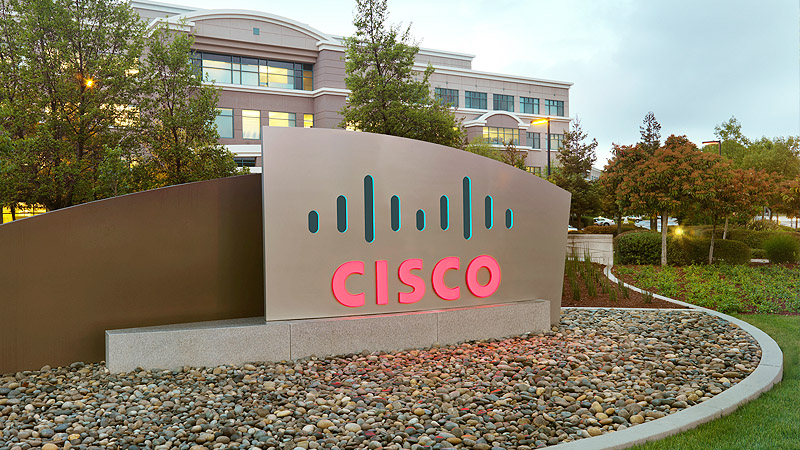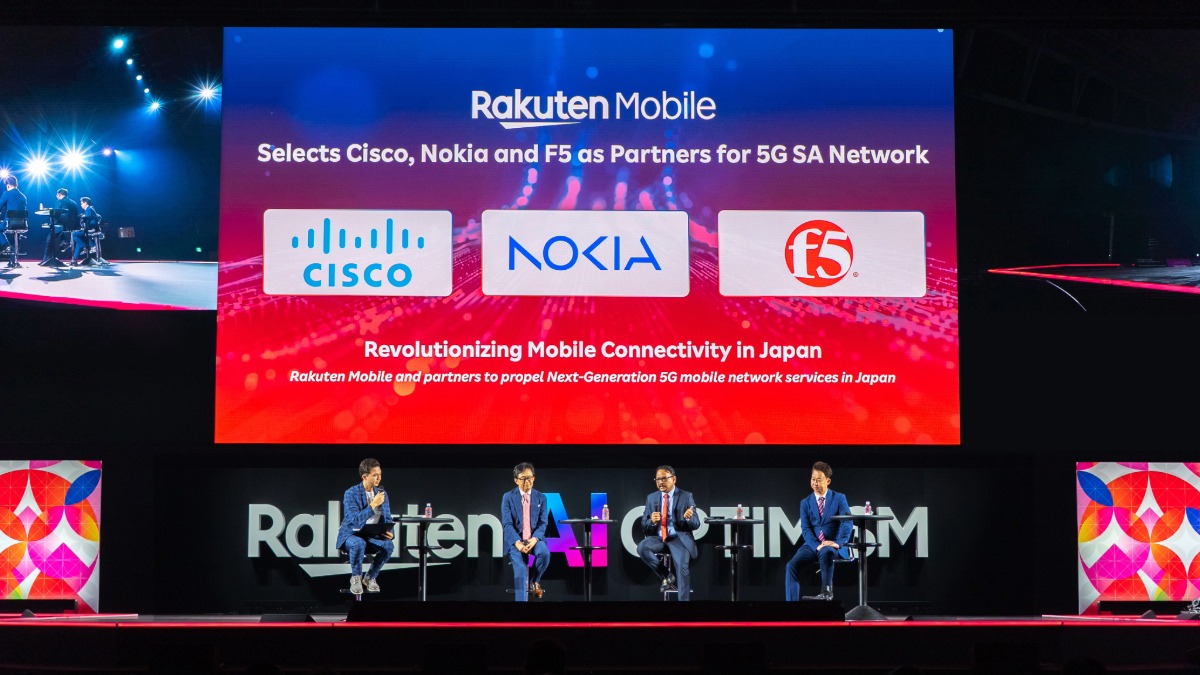TORONTO, ON - February 22, 1999 - Cisco Systems Canada Co. and WIC Connexus announced today the companies have signed a Memorandum of Understanding to deploy an end-to-end broadband fixed wireless networking solution in Canada. Utilizing Local Multipoint Communication Service (LMCS) technology, Cisco will be the primary supplier for WIC Connexus' fixed wireless network. With this network, WIC Connexus will launch a range of new leading edge Internet, data and telecommunication services starting in the Greater Toronto Area in April. Vancouver will be launched Q499 with the Edmonton, Quebec City and Saint John markets to follow soon thereafter.
WIC Connexus will be the first to market with this technology in Canada with the main objective to operate a wireless broadband networking company providing high-speed access at competitive prices to businesses ranging from small enterprises to large institutions in Canadian cities.
In a related announcement made today at the 1999 Broadband Wireless World Forum in San Francisco, CA, Cisco also announced today they intend to expand their relationship with Bosch Telecom, Inc. to enable service providers to bring integrated data, voice and video services to market quickly and more cost-effectively. Cisco and Bosch will be working with WIC Connexus to deliver the first phase of the network rollout over the next three years.
"We chose Cisco to lead our network build-out because of their Internet leadership position and demonstrated commitment to delivering New World infrastructures in Canada and around the world," said Robert Watson, president and chief executive officer of WIC Connexus. "Success in this industry requires an integrated and proven solution, and we believe Cisco can provide instant market adoption of these solutions through their New World architecture and presence in the enterprise market."
"Canada is taking a leadership role in bringing three world-class partners together to deliver a New World Internet to the wireless market," said Don Listwin, executive vice president, Cisco Systems. "Combining our worldwide leadership in networking for the Internet with Bosch's leadership in LMCS, we are delivering a tightly integrated end-to-end value proposition to our customers, and its coming to Canada first through the leadership of WIC Connexus."
"The agreement between Cisco and Bosch represents a marriage of the worldwide leader in networking for the Internet and the industry-leading radio system and services provider for the broadband fixed wireless market space. The market created this union which fully addresses the needs of our joint customers," said Ed Cantwell, president and chief executive officer at Bosch Telecom, Inc.
Cisco Systems - Connecting Canadians
"Cisco has played a leadership role in the development of many of the New World networks which will change the way Canadians live, work, learn and play," said Araldo Menegon, director, Canadian service provider operations, Cisco Systems Canada Co. "The speed at which Canadian companies and individuals are migrating to Internet- based applications is unprecedented and Cisco is proud to help Canadian service providers like WIC Connexus keep pace with this change."
Another example of a Canadian New World network is CA*net3. In August 1998 John Manley, Minister of Industry, announced a collaborative partnership between CANARIE (Canadian Network for the Advancement of Research, Industry and Education) and a private sector consortium including Cisco Systems to build CA*net 3, the world's first national optical Internet. With its vast capacity to carry multi-media traffic, CA*net 3 will enable numerous health, research, educational and commercial applications not possible on today's networks. For example, doctors will be able to participate in operations performed thousands of miles away.
Canada's leadership in developing advanced networks such as CA*net3 has been fostered in part by the advanced research conducted in Canada. Ottawa, has become Cisco's worldwide centre of competence for the research of Optical Internetworking technology based on the growth and success of its research and development unit in that city.
Much of the technology used to build these New World networks is also manufactured in Canada at Toronto-based Celestica Inc. Cisco and Celestica have a long-standing strategic manufacturing alliance, with Cisco being one of Celestica's top customers. Cisco's Canadian manufacturing amounts to several hundred million dollars per year at Celestica's Toronto facility, which employs approximately 4,500 people.
Cisco is also helping to ensure there are enough skilled Canadians to design, build and support these New World networks through a new initiative called the Cisco Systems Networking Academy program. Through this program, Cisco has invested $25 million in curriculum, equipment and resources to teach high school students the techniques required to support sophisticated networks of national and international businesses.
LMCS Technology
LMCS is broadband fixed wireless point-to-multipoint communication system. LMCS (more commonly known as LMDS outside of Canada) can replace existing phone lines, cable and other infrastructures without construction and extra cabling work by using a small unobtrusive dish at the customer-end for reception. LMCS provides a single information stream that can carry data traffic into the home or business, at significantly lower costs than equivalent connections today. The technology provides an effective "last mile" solution for the incumbent service provider and can be used by competitive service providers to deliver services directly to end users.
Most importantly, LMCS technology offers service providers a method of providing high-capacity local access that is less capital-intensive than a traditional wireline solution, faster to deploy than wireline, and able to offer a variety of applications such as data, voice and video.
About WIC Connexus
On October 29, 1996 Industry Canada awarded WIC Connexus Canada's first licence to operate Local multipoint communications systems (LMCS) in 33 major markets across Canada. This came after four years of research and development and the filing of a comprehensive application.
WIC Connexus will be entering the marketplace with an Internet Protocol state-of-the-art high capacity distributed intelligence network that will enable it to service existing legacy type services as well as capitalize on emerging high-capacity network opportunities. The company is positioned to service the fastest growing area for which there exists a limited choice in innovative and competitive business solutions today.
About Cisco Systems Canada Co.
Cisco Systems Inc., the world wide leader in networking for the Internet, is a multinational corporation with more than $8 billion (U.S.) in annual revenues and more than 16,000 employees worldwide. Cisco Systems Canada Co. was established by Cisco Systems in 1990 and is the one of the largest IT companies in Canada. Headquartered in Toronto, Ontario, the company has more than 150 employees in Canada with regional sales and services offices in Dartmouth, NS; Moncton, NB; Quebec City, PQ; Montreal, PQ; Ottawa, ON; London, ON; Winnipeg, MB; Calgary, AB; Edmonton, AB; and Vancouver, BC.
Cisco produces networking solutions for enterprise organizations, service providers and small/medium businesses. Virtually all Internet traffic travels across Cisco equipment. Cisco also uses the Internet to conduct a substantial amount of its own business. The company provides more than 70 per cent of its customer support over the Internet. Cisco products handled over the Internet now amount to more than $21 million (U.S.) each day accounting for 20 per cent of all e-commerce conducted globally.
Contact:
- Martha Cass
Strategic/Ampersand Inc.
Phone: (416) 216-8166
Pager: 1-800-68-CISCO (24726)
E-mail: mcass@cisco.com - Robert Watson
President & CEO
WIC Connexus
Tel: 416-232-3850
Tel: 403-750-4590
E-mail: robert.watson@shaw.ca
Cisco, Cisco Systems and the Cisco Systems logo are registered trademarks of Cisco Systems, Inc. in the U.S., Canada, and certain other countries. All other trademarks mentioned in this document are the property of their respective owners.





